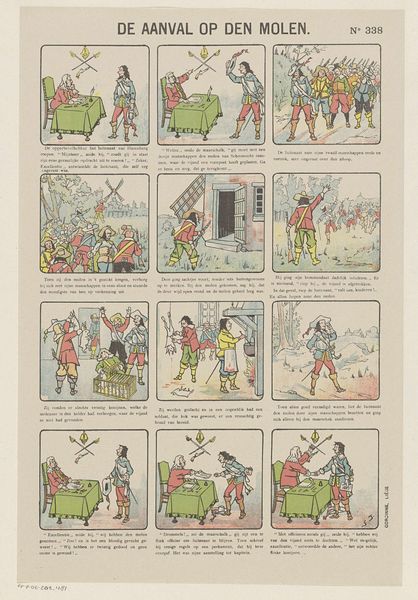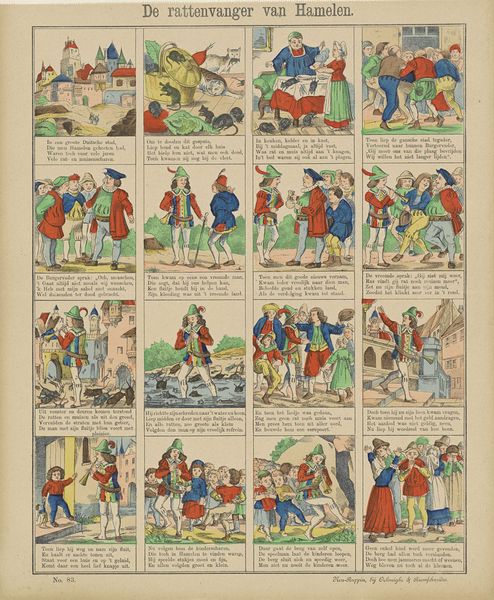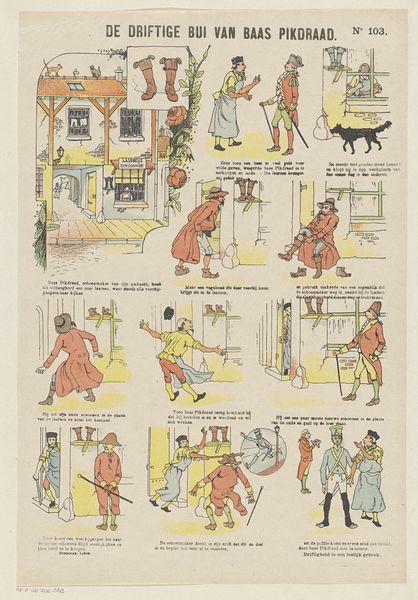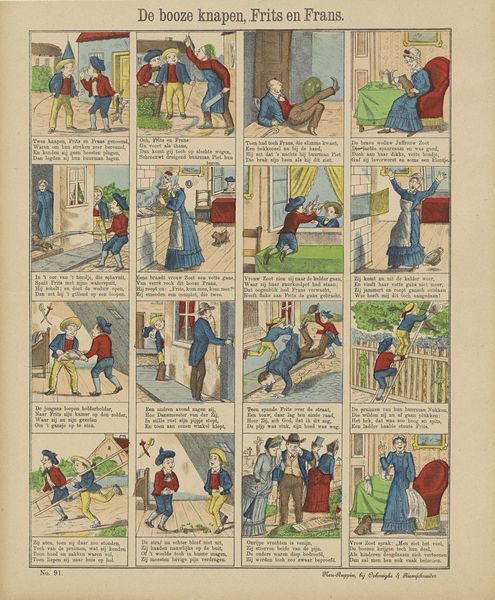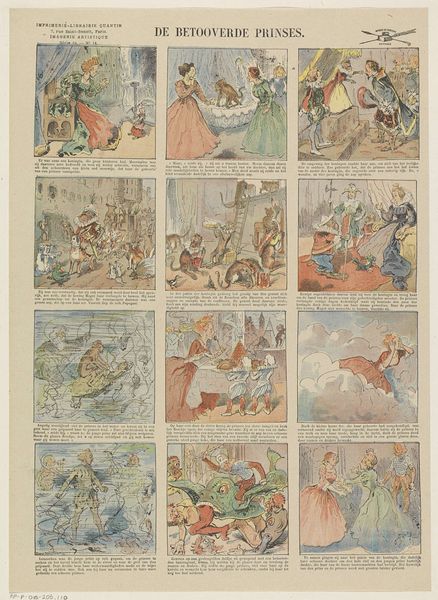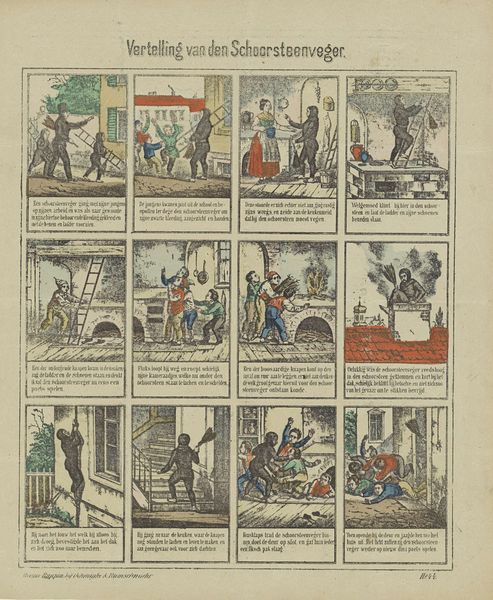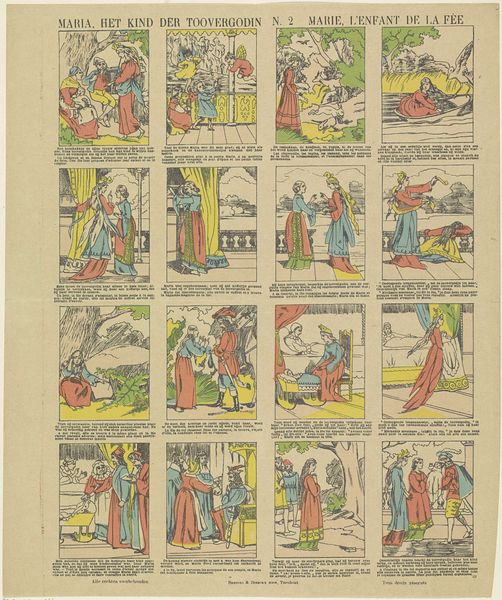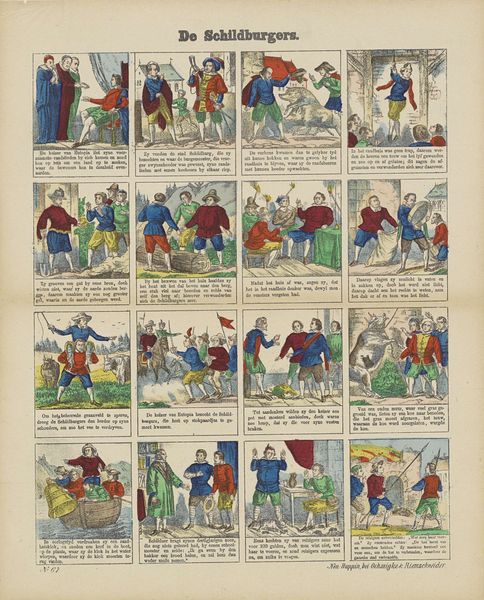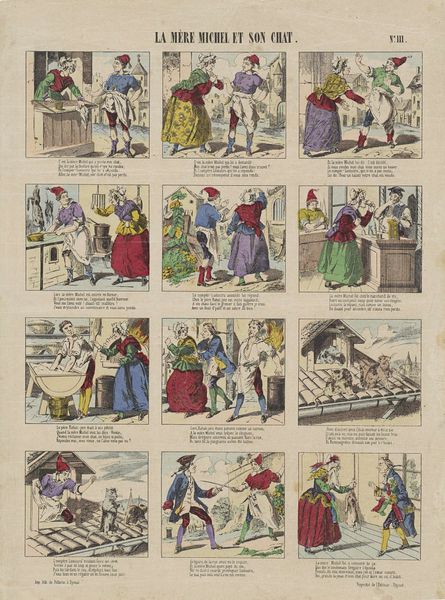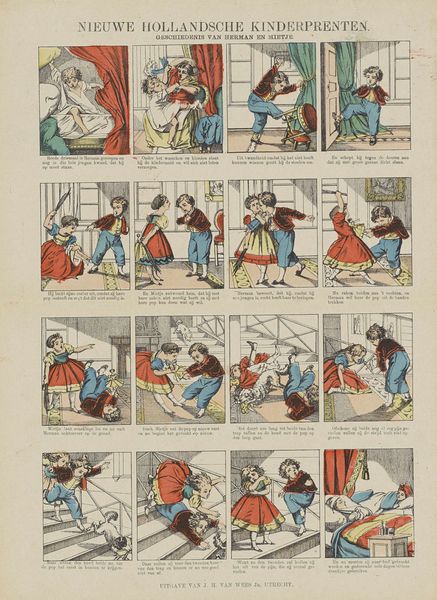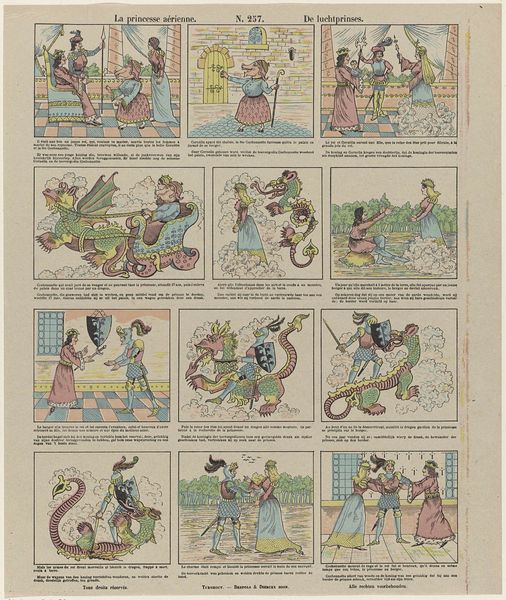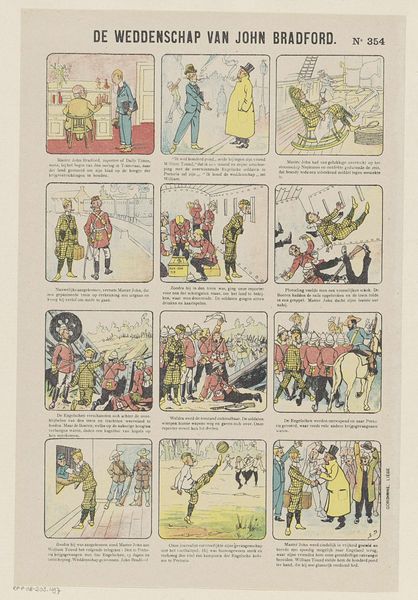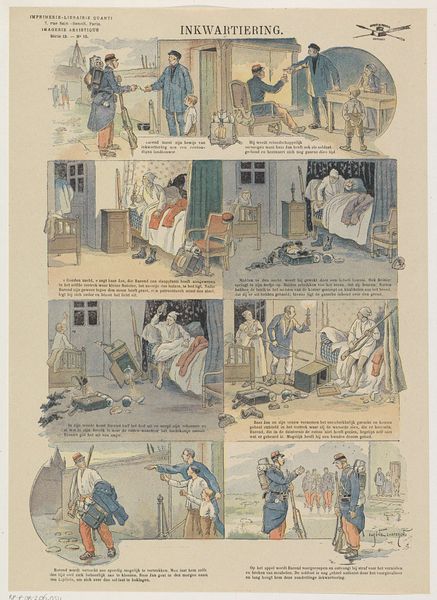
print, etching
#
comic strip sketch
#
narrative-art
# print
#
etching
#
sketch book
#
traditional media
#
cartoon sketch
#
figuration
#
personal sketchbook
#
sketchwork
#
comic
#
sketchbook drawing
#
genre-painting
#
storyboard and sketchbook work
#
cartoon carciture
#
sketchbook art
Dimensions: height 410 mm, width 333 mm
Copyright: Rijks Museum: Open Domain
Curator: Let’s consider “De man met de roede,” dating, rather vaguely, from 1828 to 1937 by the artistic duo Oehmigke & Riemschnieder. It’s a print, specifically an etching, presented as a comic strip or storyboard. Editor: It strikes me as grim! All those little scenes...a naughty list unfolding? It's giving me darkly whimsical vibes, like Edward Gorey but more folksy. Curator: Indeed, the artwork unfolds as a sequence of panels, depicting a character known as “Vader Koekelkepook” disciplining children. Considering historical attitudes toward child-rearing, we can view this piece as a cultural artifact reflecting societal norms and anxieties surrounding childhood disobedience. Editor: "Vader Koekelkepook"...sounds menacing! The way he looms in each frame is pretty unsettling. Is this supposed to be humorous, or is there a deeper social critique here? It almost feels like a twisted form of early childhood education, which says a lot about pedagogical values back then. Curator: The genre, I’d argue, leans into genre painting, portraying scenes of everyday life with an undercurrent of moral instruction, but as an historical object, this provides insights into social control. Consider the visual cues like the “ABC 123” panel, juxtaposed with disciplinary action, creating a clear message that education must be enforced, by violence, if necessary. Editor: Okay, I get it. There’s a discomfort I'm getting looking at it and, probably, that says a lot. But also I keep feeling like this artwork prefigures the darkness later expressed in Expressionism. It's amazing how societal fears and the visual language we use to transmit that stuff changes…or, sometimes, doesn’t. Curator: Precisely, in dissecting this, we gain insight not just into historical practices, but also how those are embedded into contemporary social issues of race, gender and class, especially in our modern anxieties concerning the regulation of childhood behaviours. Editor: So true! Reflecting, now I notice how unnerved this has left me—in its own way, it's quite a disturbing little time capsule. Curator: It certainly demands careful consideration and raises significant issues, it makes us understand the cultural environment during those periods.
Comments
No comments
Be the first to comment and join the conversation on the ultimate creative platform.
